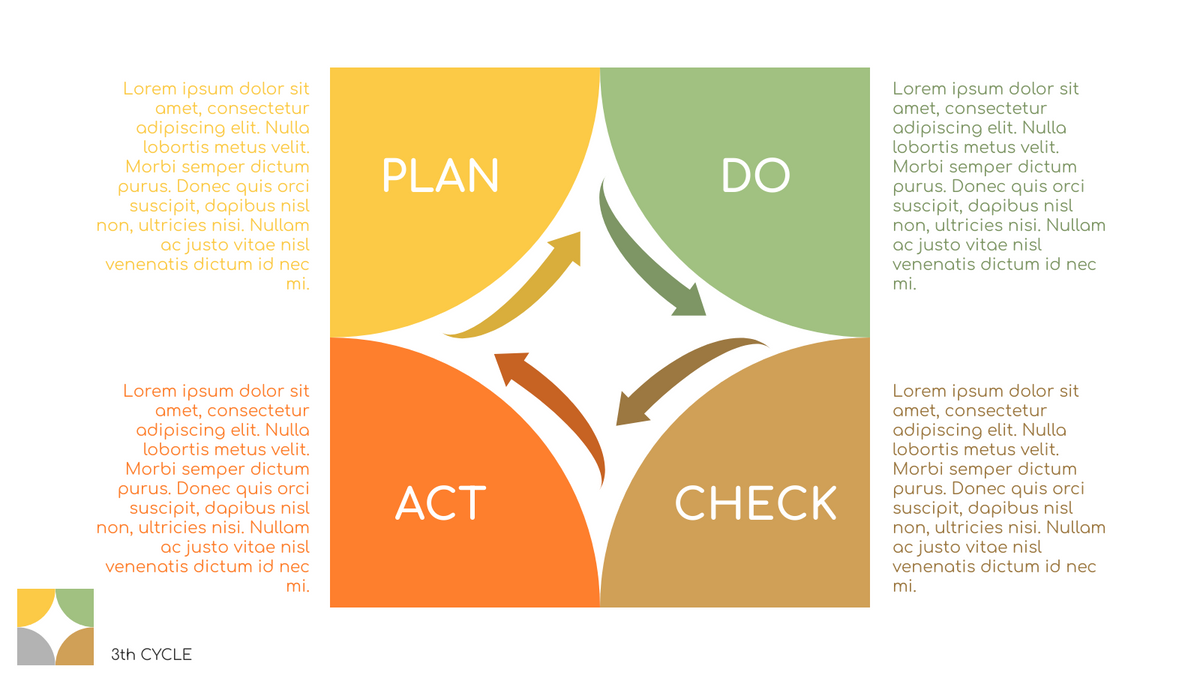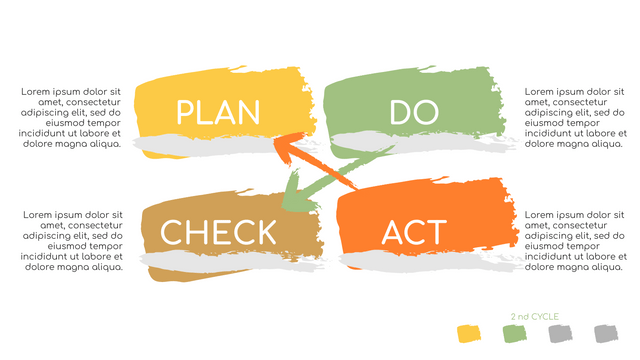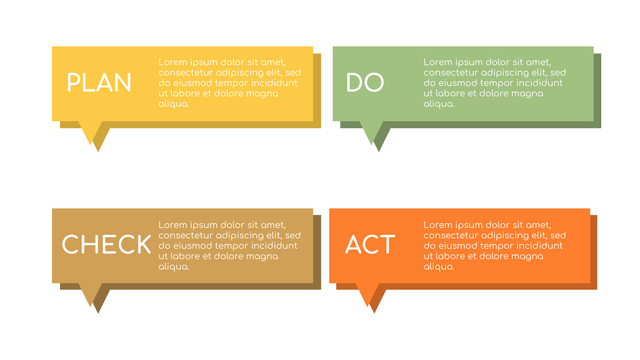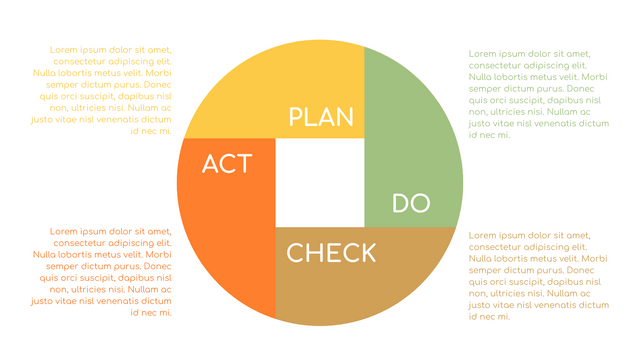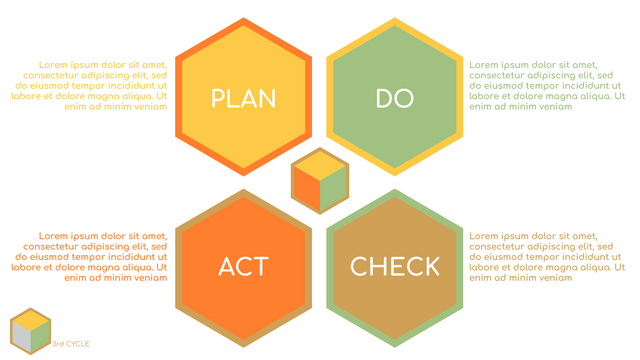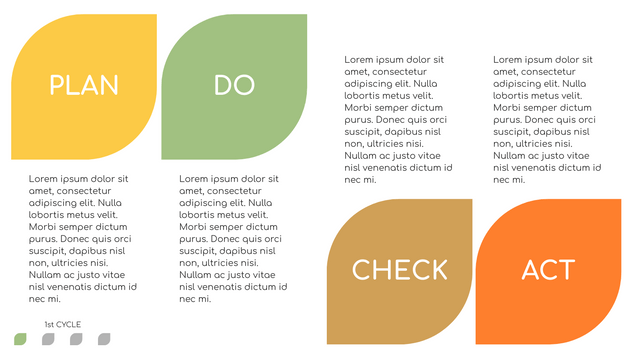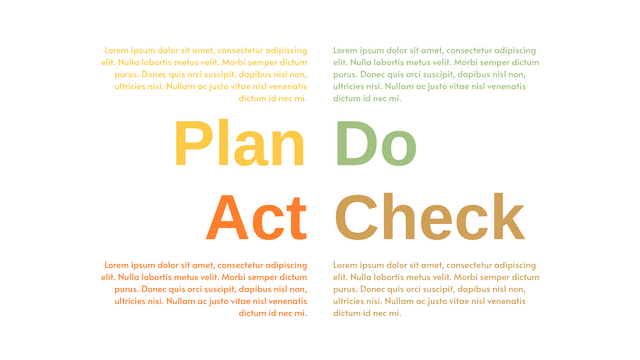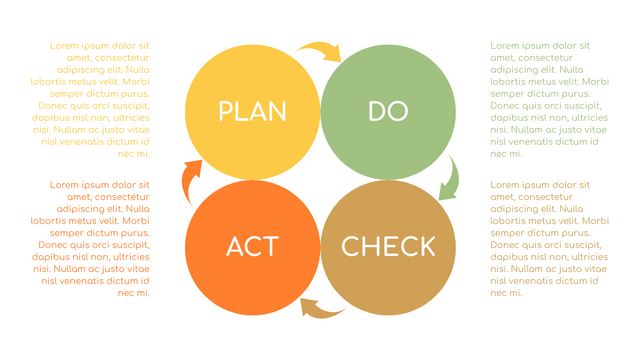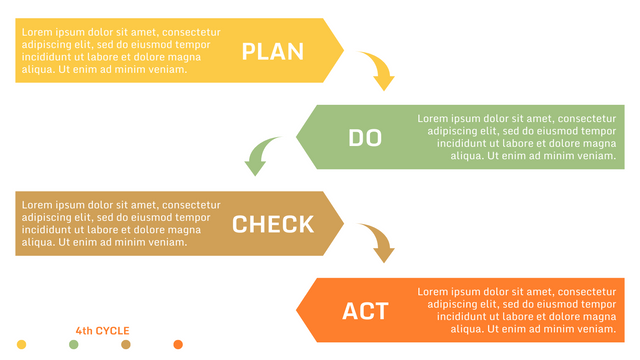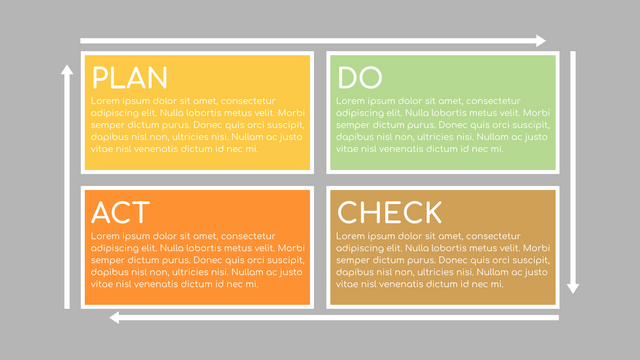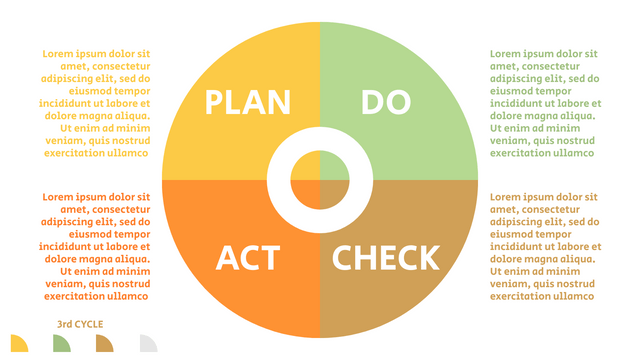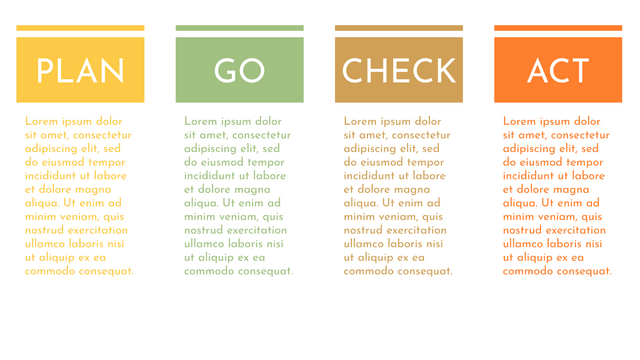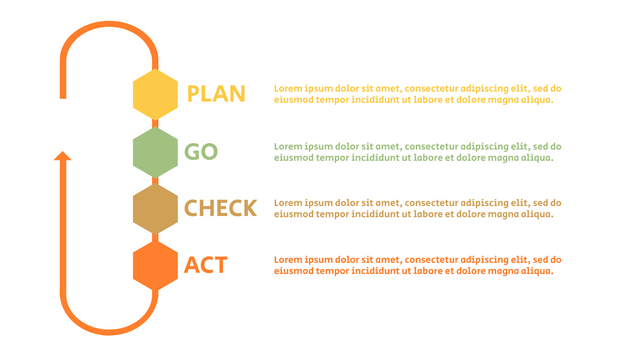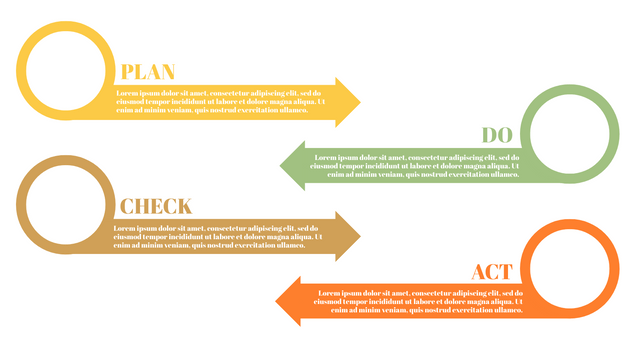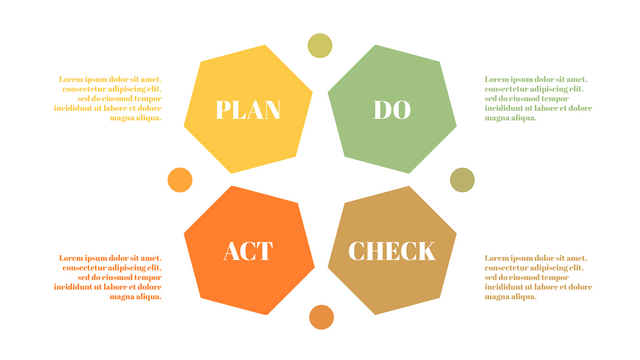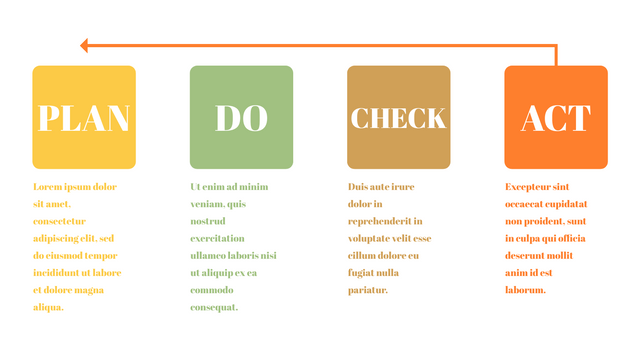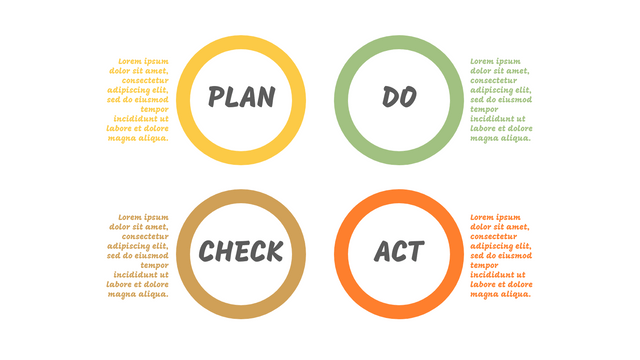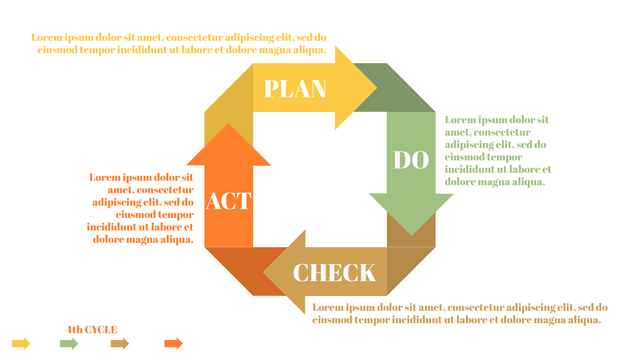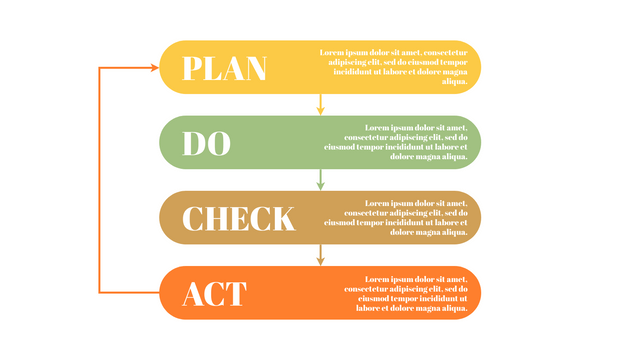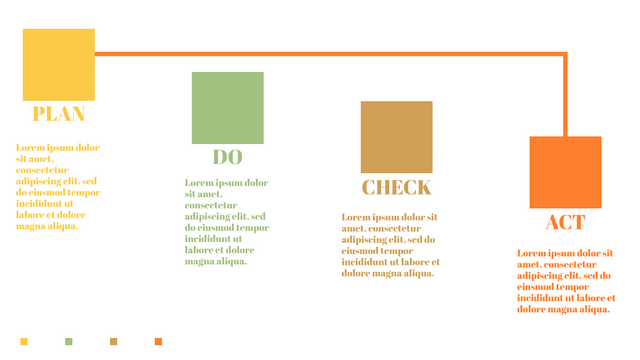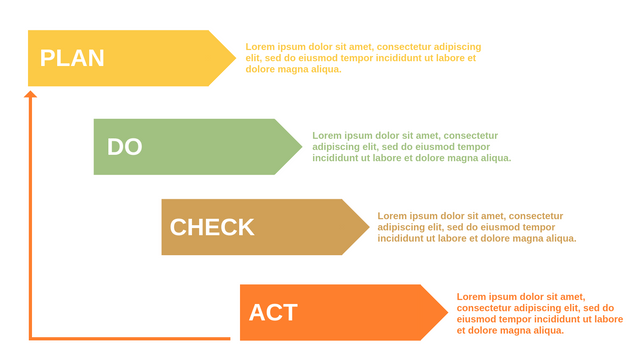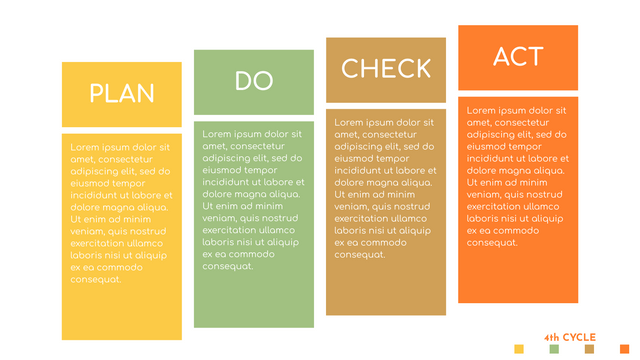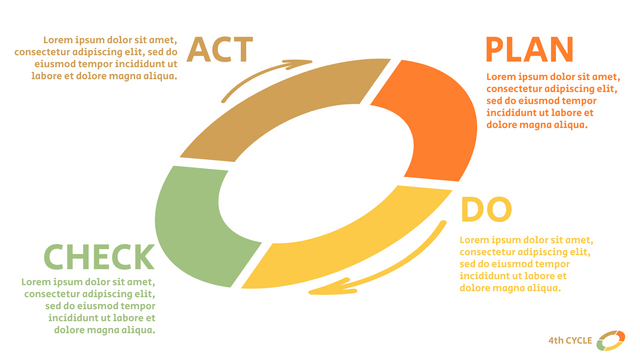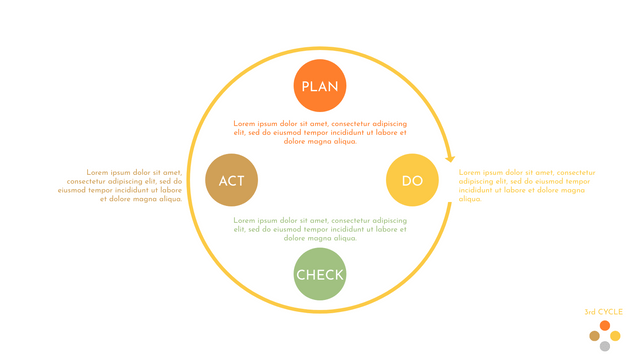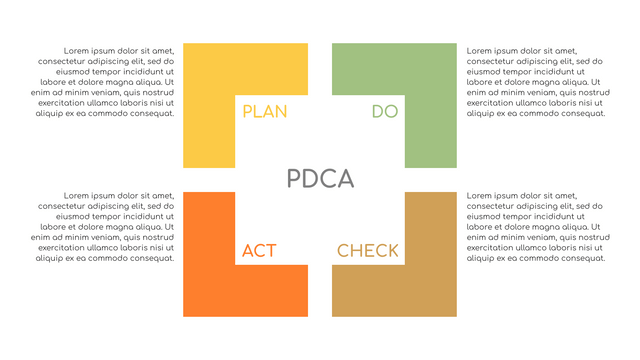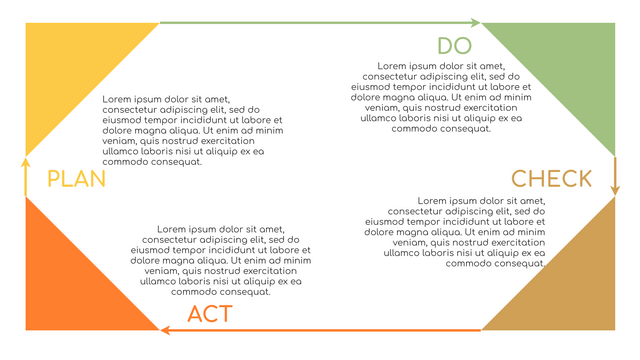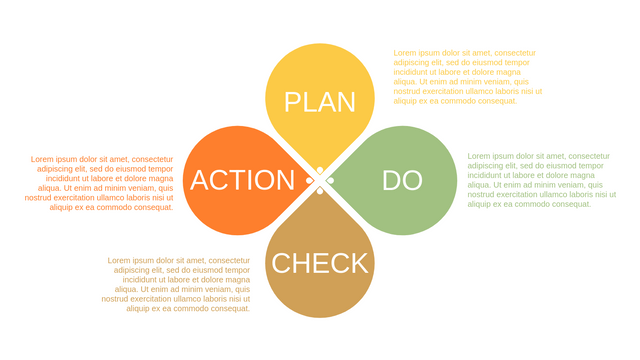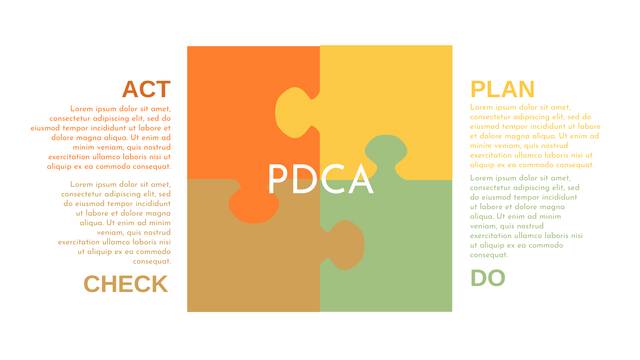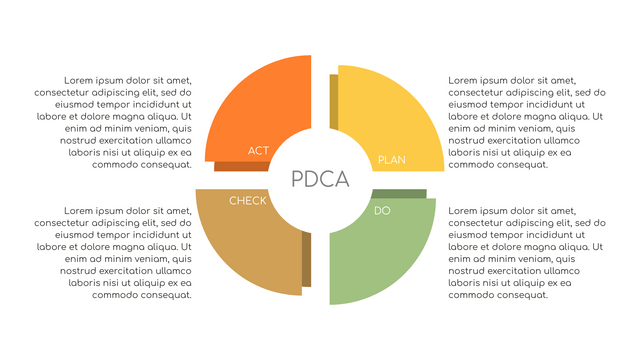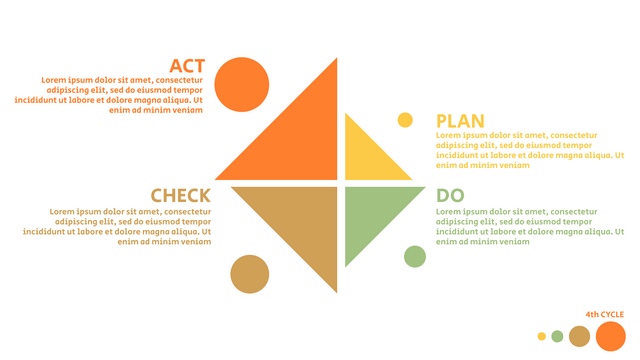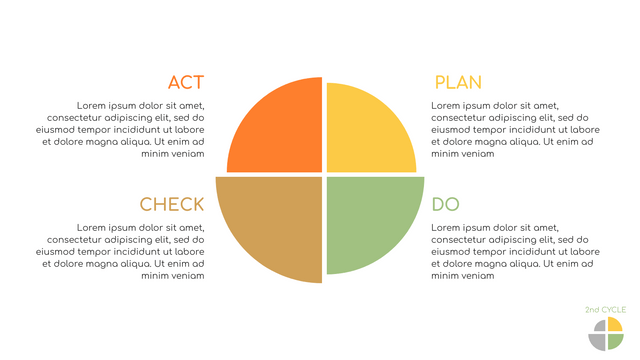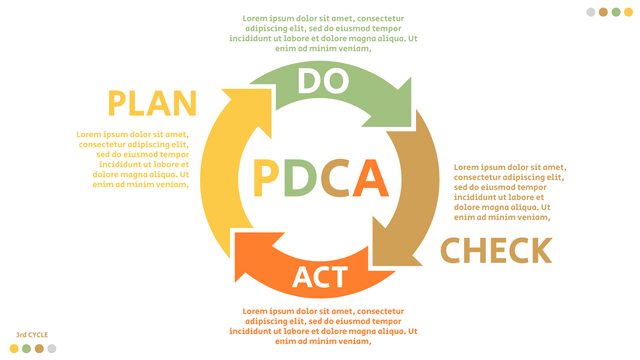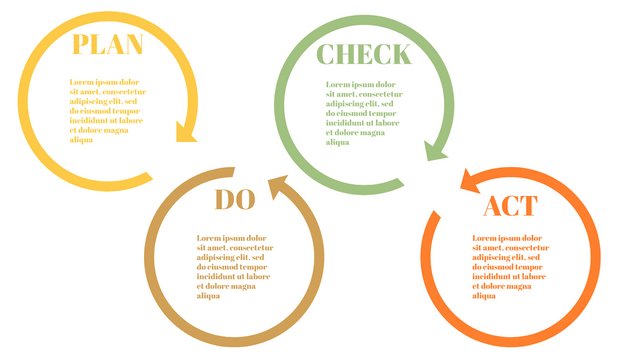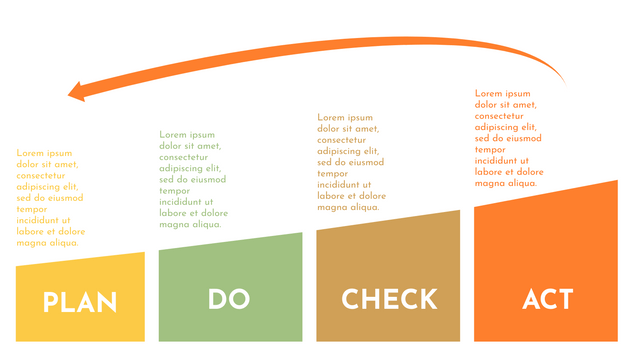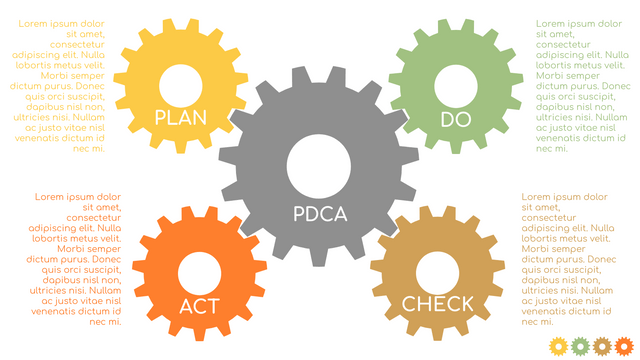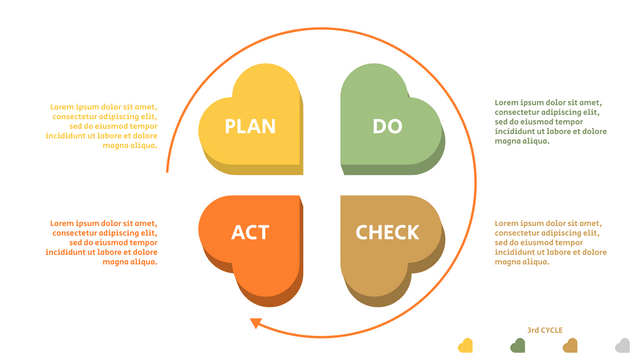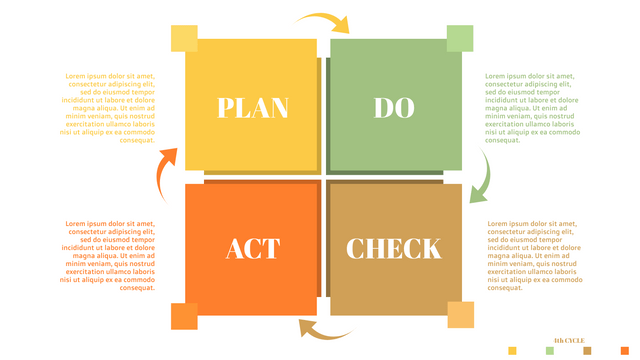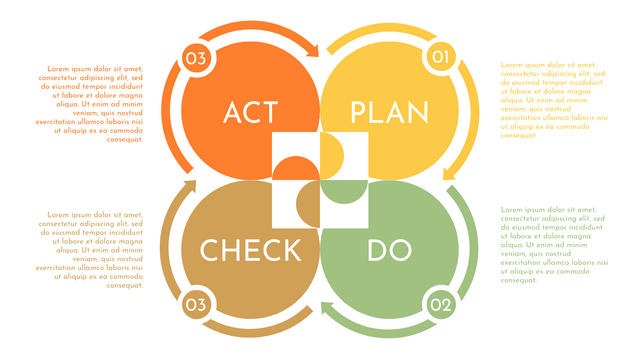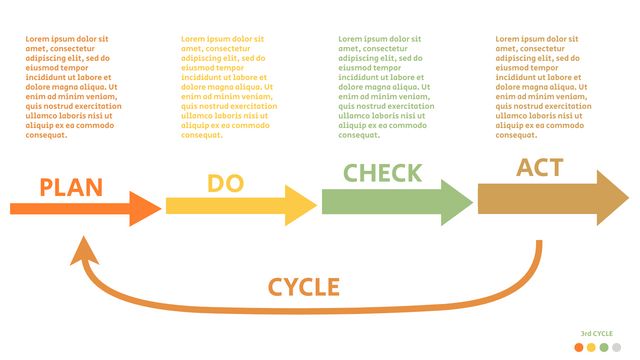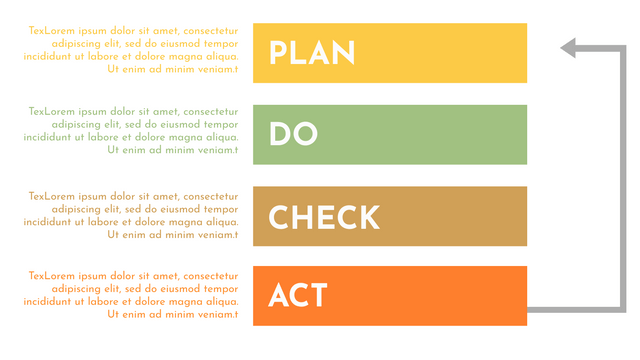Walter A. Shewhart, the original creator of the PDCA cycle (1939). The PCDA cycle was later developed by William Edwards Deming in the 1950's to help companies produce better performance. This so-called Deming Period is a means of monitoring within the company to track the continuous improvement and enhancements.
PDCA is an iterative model of performance improvement. You will then find it at the core of consistency
methodologies such as Kaizen, Absolute Quality Management (TQM) and Six Sigma. The PDCA cycle is a practical working process that makes it possible to carry out every operation successfully, and is highly commonly used in quality control. The definitions of the four letters P, D, C, and A in English are as follows:
P (Plan)-plan;
D (Do)-execute;
C (Check)-check;
A (Act)-correct.
The above four processes do not end after running once, but are carried out over and over again. When one cycle is over, some problems are solved, and the unresolved problems enter the next cycle, which rises our standard and efficiency step by step.
PDCA - an Integral Part of Total Quality Management
The PDCA cycle is a scientific procedure that carries out quality management in this order and continues in an endless loop. The operation of total quality management activities is inseparable from the rotation of the management cycle. That is to say, the scientific procedures of the PDCA cycle must be used to improve and solve the quality problems and catch up with the advanced level.
(Plan) Formulate a Plan - there must be a plan; Set a goal and acceptance criteria - This plan includes not only goals (it also the need to achieve this goal. in other words
(Do) Implement the plan - Execution is the specific operation to realize the contents of the plan
Check) Measures must be taken - After the plan is formulated, it is necessary to check in accordance with the plan to see if the expected results are achieved and whether the expected goals are achieved; Dig out the problems (if any) - to find out the problems and reasons through the inspections;
(Act) Action to be taken - Deal with the results of the summary inspection, affirm the successful experience, and standardize it, or formulate work instructions to facilitate future work; sum up the lessons of failure to avoid recurrence.
Note that: For unresolved issues, they should be referred to the next PDCA cycle for solution and improvement.
